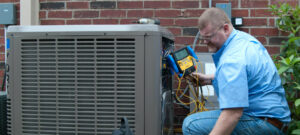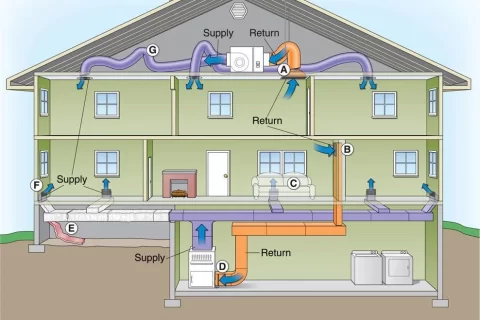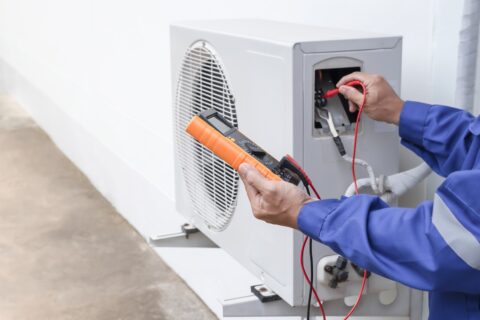The Future of Air Conditioning Technology: Innovations and Trends
AC technology has come a long way, transforming how we cool our spaces. Traditional methods are now being replaced by innovative solutions that offer efficiency and sustainability. This overview dives into the latest advancements in AC technology, marking a cool revolution in the HVAC era. From smart thermostats to eco-friendly refrigerants, these changes are reshaping the industry.
The contrast between old-school systems from an era and modern innovations in hvac is striking. Today’s technologies not only save energy but also enhance user experience. Understanding these advancements can help you make informed decisions for your home or business. Stay tuned as we explore the future of cooling solutions and their impact on our lives.
Key Takeaways
-
Air conditioning technology has evolved significantly, with modern systems offering improved comfort and efficiency compared to older models.
-
Smart cooling solutions that incorporate IoT allow users to control their AC units remotely, enhancing convenience and energy management.
-
Eco-friendly AC options are becoming more popular, focusing on sustainable materials and processes that reduce environmental impact.
-
Innovations in energy efficiency help lower utility bills and reduce carbon footprints, making it essential for consumers to look for high-efficiency ratings when purchasing new systems.
-
Advanced air purification features in AC units improve indoor air quality, which is crucial for health and well-being, especially in urban areas.
-
VRF (Variable Refrigerant Flow) systems provide precise temperature control, making them ideal for both residential and commercial applications.
The Evolution of Air Conditioning
Ancient Methods
Ancient civilizations used various methods to cool their living spaces. Egyptians hung wet cloths in doorways. As the air passed through, it cooled. In Persia, during the era, people built hvac windcatchers to direct cool breezes into homes. These early techniques laid the groundwork for future developments.
Willis Carrier’s Invention
In 1902, Willis Carrier invented the first modern air conditioning system. His goal was to control humidity in a printing plant. This invention marked a turning point for air conditioning technology. It not only cooled the air with HVAC but also improved product quality. Carrier’s design used a refrigeration cycle, which is still the basis for modern air conditioning systems today.
Refrigerant Developments
The introduction of Freon in the 1920s changed HVAC air conditioning systems significantly. Freon allowed for more efficient cooling than previous refrigerants. It became the standard choice for many years. This development increased the effectiveness of air conditioners and made them more accessible to the public.
Modern Air Conditioning Systems
Modern HVAC air conditioning units have evolved greatly since Carrier’s time. Today’s systems are more energy-efficient and environmentally friendly. Many use advanced technologies like variable speed compressors and smart thermostats. These features help optimize performance and reduce energy consumption.
Efficient Air Conditioning Technologies
New air conditioning technology focuses on efficiency. Systems now often include features like zoning and programmable settings. These advancements allow users to control temperatures in different areas of their homes. They can save energy by cooling only occupied spaces.
Central Air Conditioning
Central air conditioning systems provide whole-home cooling solutions. They distribute conditioned air through ducts, ensuring even temperature throughout a building. This system is popular in larger homes and commercial buildings due to its effectiveness.
Smart Cooling with IoT
Intelligent Systems
IoT technology has changed air conditioning. Traditional systems are now becoming smart air conditioning systems. These systems use sensors and smart thermostats. They can learn from user behavior and adjust accordingly. This leads to efficient cooling in homes.
Smart air conditioners connect to the internet. Users can control them remotely through apps. This allows for precise adjustments. For example, users can set their home temperature before arriving. This feature enhances comfort cooling and saves energy.
Remote Monitoring
Intelligent thermostats and sensors play a vital role. They monitor indoor conditions continuously. These devices provide real-time data on temperature and humidity. Users can track this information from anywhere. This capability adds convenience and control over the home environment.
Remote monitoring helps in identifying issues early. For instance, if a system is not performing efficiently, alerts notify the user. Quick action can prevent larger problems later on. This proactive approach ensures better performance of the air conditioning unit.
Automation Benefits
Automation significantly boosts energy efficiency. Smart air conditioning systems can adjust settings based on occupancy. If no one is home, the system automatically reduces power usage. This not only saves money but also lowers carbon footprints.
Green cooling initiatives benefit from these advancements too. By reducing energy consumption, these systems help the environment. The integration of artificial intelligence further enhances automation capabilities. AI analyzes data patterns, optimizing cooling processes.
Design Innovations
Design plays a crucial role in smart cooling technologies. Modern units are sleek and blend well with home interiors. Many come equipped with features like air purification and dehumidification. These additions improve overall indoor air quality.
The introduction of smart cooling has sparked a cool revolution in HVAC design. Manufacturers focus on creating systems that are both functional and stylish. Consumers appreciate the balance of aesthetics and performance.
Future Developments
Looking ahead, more innovations are likely to emerge in smart cooling technology. Enhanced connectivity will lead to even greater integration with other smart home devices. Homeowners will enjoy seamless experiences in managing their living spaces.
As technology continues to evolve, precision cooling will become standard practice. The combination of IoT, AI, and innovative designs will drive this change forward.
Sustainable Eco-Friendly Solutions
Rising Demand
Climate change has increased the demand for eco-friendly air conditioning solutions. People are more aware of how traditional cooling systems impact the environment. They want options that reduce energy consumption and greenhouse gas emissions. This shift in consumer preference drives innovation in the industry.
Innovations
Companies now create solar-powered systems to meet this demand. These systems harness solar energy, reducing reliance on fossil fuels. Manufacturers develop sustainable refrigerants that have a lower global warming potential. These refrigerants minimize harmful effects on the ozone layer.
Innovative designs also focus on improving airflow in buildings. For example, advanced filtration systems capture indoor pollutants. This leads to healthier indoor environments. Enhanced ventilation reduces the need for excessive cooling, further saving energy.
Energy Efficiency
Energy-efficient designs play a crucial role in minimizing carbon footprints. Buildings with proper insulation require less energy for cooling. Smart thermostats can optimize temperature settings based on occupancy patterns. This ensures that energy is not wasted when spaces are unoccupied.
The integration of eco-friendly materials into building designs also contributes to sustainability. Using recycled materials reduces waste and lowers environmental impact. Developers increasingly consider these factors during construction.
Maintenance Concerns
Regular maintenance is essential for ensuring that these systems operate efficiently. Neglected systems can lead to increased energy consumption and higher emissions. Proper maintenance extends the lifespan of equipment and helps maintain optimal performance.
Training technicians to handle eco-friendly technologies is also important. They must understand how to work with new refrigerants and systems effectively.
Potential Benefits
Adopting sustainable cooling solutions offers numerous benefits. Businesses can lower their operating costs by using less energy. Homeowners enjoy reduced utility bills while contributing to a healthier planet.
Sustainable air conditioning systems enhance indoor comfort as well. Improved air quality leads to better health outcomes for occupants. This is especially important in commercial spaces where productivity depends on employee well-being.

Energy Efficiency Innovations
Variable Speed Compressors
Advancements in energy-efficient technologies have greatly improved air conditioning performance. One key innovation is the variable speed compressor. Unlike traditional compressors that operate at a fixed speed, these new units can adjust their speed based on cooling needs. This flexibility allows for better energy conservation.
Variable speed compressors reduce energy consumption significantly. They can lower electricity use by up to 30% compared to standard models. These systems work by ramping up or down depending on the temperature demand. This means they do not constantly turn on and off, which saves energy and enhances system longevity.
Smart Controls
The integration of smart controls marks another important development in energy efficiency. These systems utilize artificial intelligence to learn user behavior. They adapt settings based on when people are home and what temperatures they prefer.
Smart thermostats can optimize energy utilization. For example, they can automatically adjust temperatures during peak hours when electricity costs are higher. This capability results in lower energy bills and reduced strain on the power grid.
Enhanced Performance
Innovations also focus on improving overall performance through better design and materials. New insulation technologies help maintain desired temperatures with less effort from the AC unit. These improvements ensure that homes stay cool while using less energy.
High-efficiency air filters contribute to this enhanced performance as well. They not only improve indoor air quality but also allow the system to run more efficiently. Clean filters help prevent airflow restrictions, which can waste energy.
Industry Impact
The impact of these advancements on the industry is profound. Manufacturers are now prioritizing energy efficiency in their designs. Many new models meet strict government regulations aimed at reducing energy consumption.
These developments create a ripple effect across various sectors. Businesses adopting energy-efficient systems can lower operational costs and enhance sustainability efforts. Governments also benefit from reduced overall energy demand, leading to a smaller carbon footprint.
Future Directions
Future innovations will likely build upon these advancements. Researchers are exploring new refrigerants that have less environmental impact while maintaining high efficiency levels. Integrating renewable energy sources with HVAC systems may further enhance energy conservation efforts.
Advanced Air Purification Features
Filter Technology
Air conditioning systems now integrate advanced air purification technologies. Specialized filters play a key role in this integration. HEPA filters, for example, can capture 99.97% of particles as small as 0.3 microns. This includes common allergens like pollen, dust mites, and pet dander.
Activated carbon filters also enhance air quality. They absorb odors and harmful gases from the air. These filters work alongside traditional cooling methods to improve overall indoor air quality.
Pollutant Removal
Pollutants often linger indoors. Advanced air purification features help eliminate these threats. Systems equipped with UV-C light technology can kill bacteria and viruses in the air. This is crucial for maintaining a healthy environment.
e units use ionization processes to attract and trap airborne particles. These methods reduce the presence of allergens significantly. Improved air quality leads to fewer respiratory issues for inhabitants.
Health Benefits
Cleaner air offers numerous health benefits. Studies show that improved indoor air quality can reduce asthma symptoms. It can also lower the risk of respiratory infections.
People with allergies often find relief with advanced purification features. By removing allergens, AC systems create a more comfortable living space. This is especially important during peak allergy seasons.
Moreover, cleaner air enhances overall well-being. It can boost concentration and productivity levels in homes and workplaces alike.
Energy Efficiency
Many modern air conditioning units combine energy efficiency with air purification features. Consumers benefit from reduced energy bills while enjoying healthier air quality. Efficient systems operate at lower power levels, which helps the environment too.
Systems designed for minimal energy consumption utilize smart technology. They adjust operation based on real-time air quality measurements. This ensures optimal performance without excessive energy use.
Future Developments
The science behind air purification continues to evolve. Researchers are exploring new materials for filters that improve effectiveness further. Innovations may lead to even better removal of pollutants in the future.
Smart home technology also influences advancements in air purification within AC systems. Homeowners can monitor and control their indoor air quality remotely through apps. This provides greater convenience and awareness of environmental conditions.
Precision with VRF Systems
Temperature Control
VRF systems offer precise temperature control. They allow for individualized settings in different spaces. Each room can maintain its own temperature. This flexibility enhances comfort for occupants.
In a typical building, some areas may require cooling while others need heating. VRF technology addresses this by adjusting the refrigerant flow based on individual room needs. This means that one room can be cooled to 70°F, while another is heated to 75°F. Such zoning capabilities improve overall comfort.
Zoning Benefits
Zoning is a significant advantage of VRF systems. It enables tailored climate control throughout a building. For example, conference rooms often have different requirements than office spaces. By using zoning, energy waste decreases significantly.
These systems also reduce the need for ductwork. This results in less space used for HVAC components. Buildings can have more usable space without bulky ducts running through them.
Energy Efficiency
Maintaining consistent temperatures leads to energy savings. Traditional HVAC systems often cycle on and off, wasting energy in the process. VRF systems operate differently. They use inverter technology to adjust compressor speed based on demand.
This ability to modulate power consumption means lower energy bills for users. According to studies, buildings with VRF systems can save up to 30% more energy compared to conventional systems. This efficiency is beneficial not only for finances but also for the environment.
Improved Comfort
Comfort levels increase when temperatures remain stable. Fluctuations can cause discomfort and affect productivity. VRF systems help eliminate these problems by providing steady temperatures.
For instance, in a restaurant setting, maintaining a comfortable dining environment is crucial. Customers are more likely to return if they enjoy their experience. Thus, precise temperature control enhances customer satisfaction.
Control Features
Control options are another key aspect of VRF systems. Users can manage settings remotely via smart devices. This convenience allows for adjustments without being physically present.
Many systems offer programmable schedules as well. Users can set the system to operate at specific times, optimizing energy use further. This level of control aligns with modern expectations for smart technologies in buildings.
Future Trends in AC Technology
AI Integration
Air conditioning technologies are evolving rapidly. Artificial Intelligence (AI) and machine learning will play major roles in future advancements. Systems will learn user preferences over time. This means they can adjust settings automatically for comfort and efficiency.
Predictive maintenance is another area where AI shines. By analyzing data, machines can predict failures before they happen. This reduces downtime and repair costs. For instance, sensors can monitor temperature, humidity, and energy use. If something seems off, the system alerts the owner or technician.
Sustainable Practices
The push for sustainability continues to grow. Future air conditioning designs will focus on eco-friendly materials. Manufacturers will likely use refrigerants with lower global warming potential. This change aligns with international agreements like the Paris Agreement.
Energy efficiency will also improve. New systems may utilize advanced heat exchangers and variable-speed compressors. These components help reduce energy consumption significantly. For example, some units now offer SEER ratings above 20, which indicates high efficiency.
Smart Home Integration
Smart home technology is becoming standard in many households. Future air conditioning technologies will integrate seamlessly with these systems. Users will control their cooling solutions through smartphones or voice-activated devices.
Imagine adjusting your AC while away from home. With smart thermostats, users can set schedules and monitor energy usage remotely. This feature not only enhances convenience but also saves money on utility bills.
Homeowners may also benefit from personalized cooling solutions. Advanced algorithms will analyze individual preferences and environmental factors. This means that each room could have its own tailored climate control.
User-Centric Solutions
User experience is increasingly important in design. Future air conditioning units will prioritize comfort and usability. Touchless controls and intuitive interfaces will become common features.
Moreover, systems may provide real-time feedback to users. They could inform homeowners about energy usage patterns and suggest improvements. This empowers users to make informed decisions about their cooling needs.
As technology advances, air conditioning technologies will adapt to modern lifestyles. The combination of AI, sustainability, smart integration, and user-centric design will reshape how we think about cooling spaces.
Closing Thoughts
AC technology has come a long way. From smart systems to eco-friendly solutions, the advancements are impressive. You can enjoy better comfort while being kind to the planet. Energy efficiency innovations and advanced air purification features make your indoor environment healthier and more enjoyable.
Stay ahead of the curve by embracing these trends. Investing in modern AC technology enhances your living space and saves you money in the long run. Don’t let outdated systems hold you back. Explore your options today and make informed choices for a cooler, cleaner tomorrow. Your comfort and well-being deserve it!
Frequently Asked Questions
What are the latest advancements in air conditioning technology?
Recent advancements include smart cooling systems integrated with IoT, energy-efficient designs, and advanced air purification features. These innovations enhance comfort while reducing energy consumption.
How does IoT improve air conditioning systems?
IoT enables remote monitoring and control of AC units. This allows users to optimize settings for energy efficiency and comfort, leading to lower utility bills and improved indoor air quality.
What are eco-friendly solutions in AC technology?
Eco-friendly solutions focus on using sustainable refrigerants, energy-efficient components, and designs that minimize environmental impact. They contribute to a healthier planet while providing effective cooling.
How can I improve the energy efficiency of my AC unit?
To enhance energy efficiency, consider regular maintenance, upgrading to inverter technology, and utilizing programmable thermostats. These practices can significantly reduce energy consumption.
What is a VRF system in air conditioning?
Variable Refrigerant Flow (VRF) systems allow for precise temperature control across different zones. They are highly efficient and adaptable, making them ideal for both residential and commercial applications.
What future trends should we expect in AC technology?
Future trends include increased automation through AI, enhanced integration with renewable energy sources, and further advancements in air purification technologies. These trends aim to create smarter, healthier living environments.
How important is air purification in modern AC systems?
Air purification is crucial as it improves indoor air quality by removing pollutants and allergens. Modern AC systems often incorporate advanced filters and UV light technology for cleaner air.


